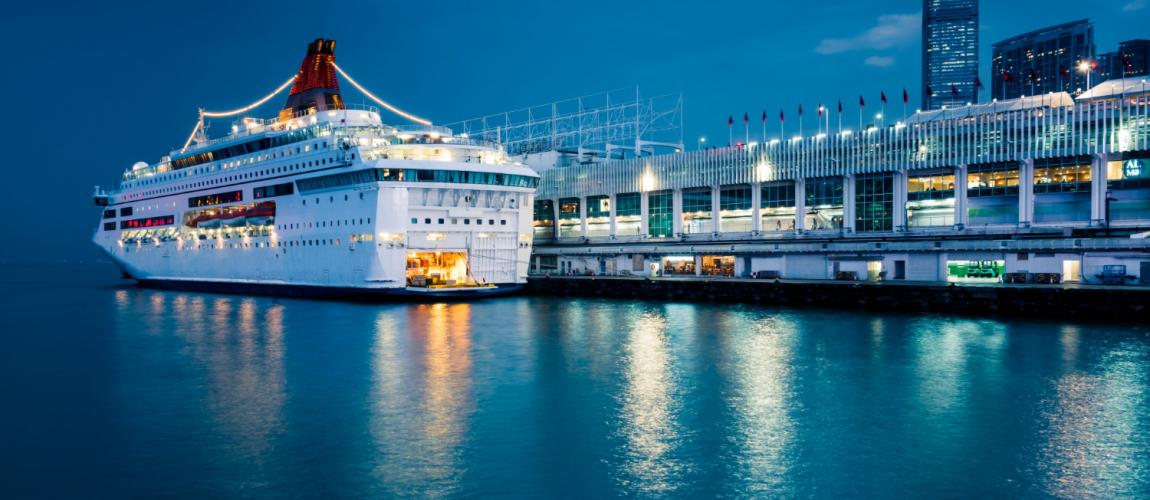Kalangala Integrated Infrastructure Programme, Bugala Island, Uganda

Photo Credit: Image by Freepik
On this page: A case study on Kalangala Integrated Infrastructure Programme, Bugala Island, Uganda. Find more at the Municipal Public-Private Partnership Framework - Project Summaries section for brief summaries of around 100 projects from around the world, examples of successes and challenges, as well as innovative ideas on solutions, or visit the Guidelines on Innovative Revenues for Infrastructure section.
Project Summary: Background Bugala Island, with a population of 60,000 located in Lake Victoria, Kalangala District, was one of Uganda’s most deprived districts. Two-thirds of the economically active population of the Island were engaged in fisheries and agriculture. However, they lacked adequate infrastructure along the agricultural supply chain, such as safe, regular access to the mainland, reliable electricity and clean water, which are vital for growing and promoting agriculture and fishing activities. The complexity of developing multi-sector, smallscale island infrastructure had deterred the private sector from investing in the Island. In 2005, Bugala Island residents sought InfraCo Africa’s help to restore and expand their infrastructure. In response, InfraCo Africa partnered with the Ugandan government to establish a special purpose vehicle (SPV) called Kalangala Infrastructure Services (KIS) to oversee the provision of four infrastructure services, namely ferry boat connection, electricity, clean water, and roads, on Bugala Island. Project Structure KIS is a private, mixed-utility company created to own, finance, construct, operate and maintain four infrastructure projects, namely: Two roll-on/roll-off commercial ferries, each with a capacity of 18 vehicles and 109 seated passengers; A 1.6 MW hybrid solar and thermal power plant; A series of the solar-powered pump-based water supply systems to replace the existing one; and Upgrading the 66 km main island road on Bugala Island from an unpaved dirt road to a Class B gravel road. The Government of Uganda offered political risk protection in the form of a sovereign guarantee under the SPV agreement. In the event of an adverse political event, the government will purchase all components of the project with a termination amount sufficient to repay all equity and outstanding debt held by KIS. The USD 44 million in capital costs are being financed through a combination of equity, debt, and grants. Equity capital was provided by the Industrial Development Corporation of South Africa, Uganda Development Corporation, InfraCo Africa, and Emerging Infrastructure Fund. Commercial debt is provided by Nedbank Capital Ltd., which benefited from a credit guarantee issued by USAID and GuarantCo Ltd. The grants were provided by the Private Infrastructure Development Group (PIDG) and the Netherland’s entrepreneurial development bank, FMO. The operational costs will be recovered through: KIS’ revenues deriving from user fees collected for ferry transportation, electricity, and water services; A consumption-based subsidy (for water and electricity) offered by the Global Partnership on Output-Based Aid (GPOBA) (now known as the Global Partnership for Results-Based Approaches (GPRBA)), to be disbursed during the first four years of operations; and A shadow toll (subsidy) for road usage. Lessons Learned KIS began in 2005, but the project only began to show progress in 2013, due to the limited funds available early on and the lengthy bureaucratic processes for obtaining the necessary legal approvals from various government agencies. Once the four components of the project became fully operational, Bugala Island began to thrive and has contributed to making Kalangala one of Uganda’s wealthiest region. As a result of the improved connectivity, the fishing community now has improved beach management units, speedier access to fish processing facilities and refrigeration, access to more information and markets, and access to clean water for local fish processing. In addition, Bidco Oil Palm Ltd. acquired 10,000 hectares on Bugala Island, of which 3,500 hectares were provided for 1,700 small-hold local farmers for oil palm plantation and related mill facilities. The KIS also creates jobs for Bugala Island residents, ensuring a transfer of knowledge and technology. Currently, negotiations are underway between the KIS and the Government of Uganda to scale-up the solar power, refurbish and operate the Kalangala Town Council electrical grid and further upgrade of the main road. The project was made possible due to bundling four infrastructure projects together, which allowed for multiple revenue streams, diversification, and economies of scale, while increasing the investment size to an amount attractive to both equity investors and commercial lenders. The multiple revenue streams help mitigate unpredictability in demand risk and may generate sufficient revenue to support the construction and maintenance of other infrastructure projects.1 Footnote 1: Case source(s): http://www.fao.org/3/ i0465e/i0465e00.pdf Accessed on June 3, 2019. http://www.infracoafrica. com/project/kalangalainfrastructure- services/ Accessed on June 3, 2019. https://www.pidg.org/ project/kalangalainfrastructure- services/ Accessed on June 3, 2019. https://www. theeastafrican. co.ke/business/ USD50m-Kalangalainfrastructure- projecttakes- off--/2560- 1920710-ed5mejz/ index.html Accessed on June 3, 2019. https://eleqtra.com/ projects/kalangalainfrastructure/ Accessed on June 3, 2019.
The Guidelines on Innovative Revenues for Infrastructure (IRI) is intended to be a living document and will be reviewed at regular intervals. They have not been prepared with any specific transaction in mind and are meant to serve only as general guidance. It is therefore critical that the Guidelines be reviewed and adapted for specific transactions.
To find more, visit the Innovative Revenues for Infrastructure section and the Content Outline, or Download the Full Report. For feedback on the content of this section of the website or suggestions for links or materials that could be included, please contact the Public-Private Partnership Resource Center at ppp@worldbank.org.
Updated:
TABLE OF CONTENTS
I. Innovative Revenues for Infrastructure (IRI)
2. Introduction to Commercial Value Capture (CVC)
3. Applying CVC in Infrastructure Projects
2. Case Studies in CVC from International Experiences
Related Content
Select WBG PPP Toolkits
Featured Section Links
Additional Resources
Climate-Smart PPPs
Type of ResourceFinance Structures for PPP
Type of ResourceFinancing and Risk Mitigation
Type of Resource